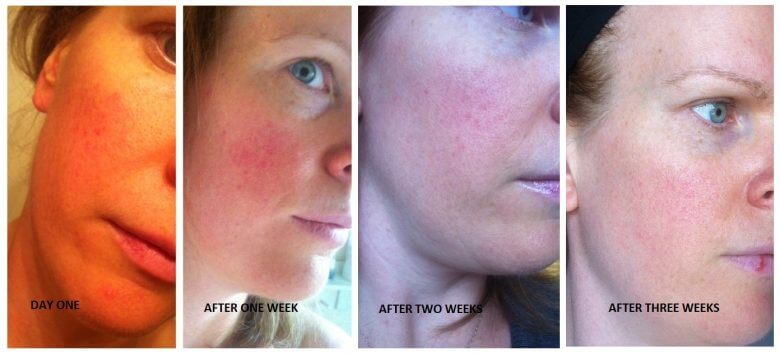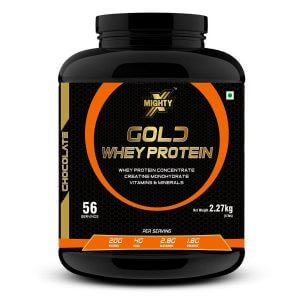At a Glance
- The oil cleansing method is a technique for skin cleansing which involves applying specific types of oil to the skin to remove dirt and debris.
- Oil cleansing is a very effective technique which works by using oil to soften and loosen the skin oil and debris so that it can be removed easily
- The oil cleansing method is suitable for all skin types – including oily skin
Have you ever had one of those moments when, trawling through the internet, you stumble across a little snippet of information that makes you sit up and take notice? This was the case for me when I first heard about oil skin cleansing.
I’ve never had the best skin in the world, and as I’ve matured I’ve become increasingly concerned about the amount of chemicals we use on our bodies.
I was actually browsing to see if I could find some recipes for homemade cosmetics with natural ingredients when I came across a throwaway comment about the oil cleansing method. Well that was enough to get me interested. I did a bit of research and I’ve now been using the oil cleansing method for a few months. I have to say I’m impressed with the results.
So I thought I’d share with you what I’ve learned about the oil cleansing skin care method, how to do it and what the experts have to say about it.What Is the Oil Cleansing Method?
The idea of using oil to cleanse our skin sounds a bit strange at first – we’ve been told for years that the oils which are naturally produced by the skin should be regularly cleansed from our faces as they become mixed with make-up, dust and tiny particles of dirt.
So why would we want to add even more oil into the mix?
Here’s the Science Bit
If we look at the cleansing process from a scientific perspective, things begin to make a bit more sense. First of all, let’s consider cleansing the skin with water alone. Water and oil don’t mix; they separate into two distinct substances no matter how much you try to mix them.
This is because of the nature of oil and water molecules. A water molecule has a very small positive charge at one end, and a negative charge at the other end. This means that water molecules link up very nicely, all on their own, via hydrogen bonds, forming a barrier that the oil molecules cannot penetrate.
Enter stage left: soap. The purpose of soap is to break down the bonds that hold the molecules together, allowing the two substances to mix and form what’s called an emulsion.
However, the mixture of soap, oil and water forms different chemical compounds which are left behind on our skin as residue. This can be too harsh on skin – especially for the face, drying it out and leaving it looking dull.
This has lead to the development of the vast array of facial cleansing products that are available on the market today. These products are, however, not without their problems.
Some products go a bit overboard and strip out too much of the natural oil we produce. This leads to a vicious circle where the skin recognises the loss of natural oil and overcompensates.
Another problem with some skin care products is they include substances – especially fragrances – which can irritate the skin. The good news is that there’s a simpler, more natural solution?
How Does the Oil Cleansing Method Work?
The first and most important point to note is that oil has the ability to mix with and dissolve other oil. This gives us our first clue that there could actually be something in this oil cleansing method.
While many of us might not like the idea of smearing oil all over our faces, it is important to remember that oil is extremely important for normal skin function. Oil is produced naturally by the body to help lubricate and waterproof the skin.
The basic idea behind the oil cleansing method is that the oil massaged into the skin will mix with our natural oils and impurities. In addition, a little heat is used to soften the skin, open the pores and facilitate cleansing.
The Oil Cleansing Method and Acne
Acne is a skin condition which is characterized by inflammation of the sebaceous glands and hair follicles which, according to the American Academy of Dermatology, can be irritated by perspiration, make-up, sunscreen and diet. (source)
Most acne sufferers will be aware of numerous different treatment methods, ranging from medication,chemical peels to laser and other forms of light therapy. Many of these treatments are helpful to some extent in managing acne, but they do have their disadvantages, such as negative side effects or considerable expense. (source)
While oil is often regarded as the bad guy when it comes to skin and acne, as we’ve already discussed, it’s not the oil that’s the problem; it’s the blocked pores and trapped impurities.
The oil cleansing method offers acne sufferers the opportunity to deep cleanse the skin with natural ingredients to decrease the blockages in the skin, allowing the impurities to escape.
While there aren’t any scientific studies to date which categorically say that the oil cleansing method is effective for acne, this really isn’t surprising. The type of skin an individual has combined with the almost unlimited oil blends that can be produced means oil cleansing is not an exact science that is easily studied.
Anecdotally, however, many acne sufferers report very positive and often remarkable improvements in acne symptoms after using the oil cleansing method. Not everyone agrees, however; some people find it makes their symptoms worse, although in many cases, the oil blend, technique and length of trial period is not specified.
Which Oils to Use?
Not all oils are created equal, especially when it comes to skin health. It is essential to select oils which are going to work well with your skin, and there is a little room for experimentation here.
The benefits of castor oil have been well documented throughout history. It has a unique chemical makeup, although well known as a laxative when taken internally, castor oil possesses many other proven health benefits including antibacterial, antifungal and anti-inflammatory properties.
The only problem when applying castor oil to the skin is that it’s a very thick, viscous liquid. To make the castor oil easier to apply, many people choose to mix the castor oil with another thinner oil.
If your skin is very dry, you could try using some rich, hydrating oil like almond, avocado or jojoba. Neem, hazelnut, sunflower and evening primrose oils are astringent and antibacterial oils which are good for acne prone skin.
You can really use any oil you like to blend with the castor oil. Some people like to add a few drops of essential oils to their blend, but it’s advisable to check that anything you add is appropriate for your skin.
The exact proportions of the oils depends on you and your skin type, but in general a blend of between 10 and 60% castor oil to between 40 and 90%t olive or sunflower oil works well for most people.
As a general rule of thumb, the more oily your skin is, the higher percentage of castor oil you should use in your mix. Whatever you decide to use as a blending bottle for your oil, be sure to take very good care to clean it out and sterilise it between each batch.
Similarly, make sure you wash your face cloths well, using a generous amount of detergent on a hot wash.
Effects of Different Oils
One word of caution about olive oil and coconut oil – normally held is huge esteem in respect of health and beauty benefits, many people report an increase in skin breakouts and undesirable results when using one of these two oils for the oil cleansing method.
Coconut oil has comedogenic properties, meaning it can block the pores. Some people find that jojoba oil has a similar effect, though others disagree.
If you have extremely dry skin, you also need to be cautious about using castor oil. It can be very drying, so use a low percentage of castor oil in your blend. If your skin starts to dry out, you might want to miss out on the castor oil altogether and experiment with different oils.
How to Use the Oil Cleansing Method
Although the oil cleansing method is relatively simple, it is important to follow the correct procedure. Here’s my step-by-step guide on how to do an oil cleanse:
Pour a generous amount of your blended oil into the palm of your hand. Rub the palms of your hands together to evenly distribute the oil and warm it up.
Apply the oil to your face and begin to massage the oil into the skin with small circular movements. This will soften the skin, loosen the oil and debris, and remove everyday cosmetic and sunscreen residue.
Take the time to thoroughly massage the oil into every area of the skin. You can spend a little extra time on problem areas.
When you feel that the oil has been massage deeply into the skin and the pores are saturated with oil, take a clean face cloth and soak it in very hot water. Wring out the water, preferably without burning your hands!
Apply the steaming face cloth to your skin and allow it to cool while in contact with your skin.
Gently wipe the skin with cool face cloth, rinse it in hot water again and apply to the face once or twice more. Resist the temptation to scrub your skin with the face cloth; this is not necessary with the oil cleansing method.
To finish, take a tiny amount of your oil blend and lightly dab it into your skin.
What to Expect
Many people report glowing results after the first oil cleansing treatment. Others find that results don’t come quite as quickly, and some people experience a worsening of their skin condition before things get better.
As with salon facial treatments, it’s not unusual for the oil cleansing method to induce breakouts initially as the skin gets rid of all the impurities which have been trapped.
It’s also normal for some people to feel that their skin becomes more oily after starting the oil cleansing method, but most people find that this settles down as the skin responds by balancing the amount of of oil it produces.
Final Thoughts on the Oil Cleansing Method for Face Skin & Acne
After researching all of the information on oil cleansing, it seems that the mechanism of action is well based in scientific principles. Applying oil to the skin helps to dissolve natural oils and impurities. Although there isn’t much hard scientific evidence for the oil cleansing method, many people find it very helpful.
It is important to match the right blend of oils with your skin type and to use the correct procedures for effective oil cleansing. Once you’ve got these factors right, oil cleansing is very easy to do and often very cost effective, depending on the oil you choose.
In the specific case of acne, again there is very little evidence to categorically state that it works, but in practice many people find it highly effective in improving their symptoms.
Personally speaking, I’ve been using the oil cleansing method for a few months now. I have found that it’s been a real help in making my skin clearer and brighter with fewer breakouts.
In my opinion and according to the information I found during my investigation, the oil cleansing method is definitely worth a try, but it is important to closely monitor the condition of your skin to see it works for you.




